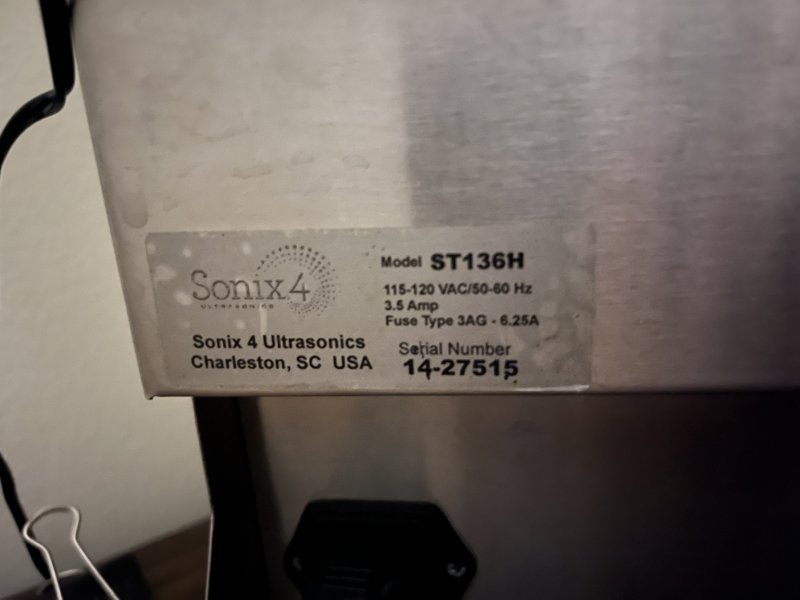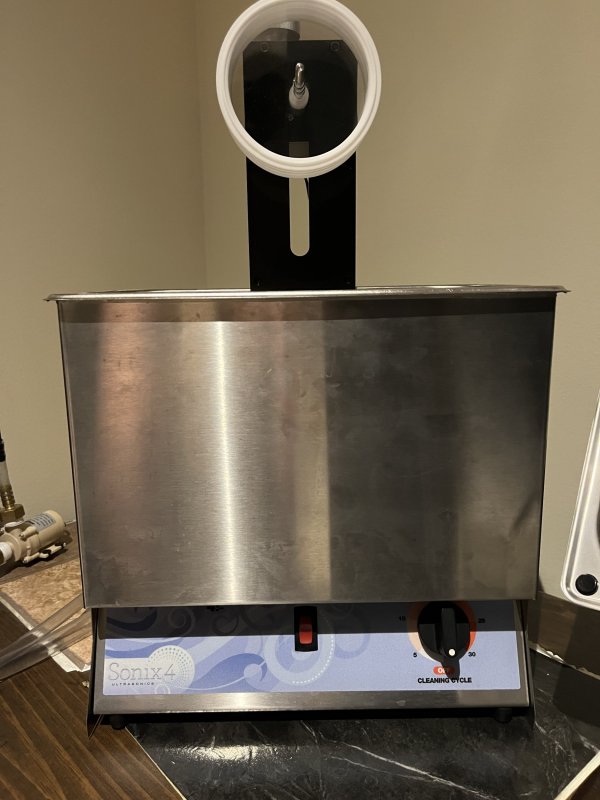What exact model of Sonix4 do you have? This was a USA made UT tank and this is best info I can find https://www.interguidedental.com/equipment/instantsearch/result/?q=sonix and https://www.dentalcompare.com/1186-SearchResults/?search=sonix . The operator's manual makes no mention of kHz - https://c1-preview.prosites.com/106982/wy/docs/Installation_Guide-Sonix.pdf

It’s an older ST136H. I know that the Hz here is for the input power, not the transducers. When I bought it, it was specifically listed as being 60kHz, and the second link you provided shows exactly that in the specs (the versions with the H suffix have the built in heater).
It’s worth noting that I can stand next to the unit and not be overly bothered by the sound, my cat too, thus suggesting the higher operating frequency. It also takes was longer to puncture the tin foil, providing the same indication.





